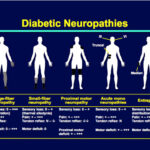Cancer care for women
Cancer is one major problem these days and it has become so common to hear of someone known to you, perhaps, on treatment for cancer. It is better to avoid having a cancer than to be treated for one. I do agree that treatment modalities have improved by leaps and bounds and so also have the investigative modalities. Different cancers affecting different areas of the body are known. However, the common ones known among women are the cancer of the breast, the uterus, the ovary and cervix. The drastic changes in lifestyle and increased use of chemicals in various cosmetics and food have led to a steep rise in the prevalence of cancers.
For women above the age of 40 years should be caring for their breasts as much as probably their face ! All it needs a self examination and the earliest changes can be detected by oneself much quicker than a healthcare professional. This is called breast self examination. One can stand in front of mirror and compare the 2 breasts. If the nipple or breast size varies in relation to the other note that down. Feel the breast while lying down. Use the left hand to feel the right breast and the left hand for the right breast. Feel the whole breast from the collar bone to the top of the abdomen and from the armpit to the cleavage with the flat of the hand in a circular motion. Do not panic if you feel any lumps. All lumps need not be cancer. There are lumps which may come and go during the menstrual cycles. Normally the upper and outer part of the breast has the most of lumps. The lower half of the breast can feel like sand on a beach. The area under the nipple can feel like big grains of sand.
It is wise to have the breast examined annually by a doctor who is trained to do so. The doctor will examine the breast by inspection, by feeling for any changes, feeling for any lumps in the breast or in the armpit. The doctor will confirm the presence of lumps by doing an ultrasonogram of the breast. This will detect any lumps hidden in the breast tissue. Sometimes a piece of tissue is taken with a needle which will be inserted into the suspicious lump. A mammogram, a type of X ray examination, will also be performed by the doctor which will have some radiation, but will view the breast in multiple views by pressing the breast tissue for better delineation of any masses. The doctor will look for asymmetry, inversion of the nipple, spots of calcium in the breast tissue and skin deformity. Make it a routine to have a check annually. The check up may take about an hour at the most. These tests are the most commonly performed though there are much more sophisticated tests. It is not wise to perform a mammogram in young women in her thirties as the fat content in the breast at that age is more. However the doctor will decide especially if falling in a high risk category to develop breast cancer. Remember that not all lumps can be detected by the mammogram and tests.
When should you be concerned about a breast examination:
• Family history in a close relative such as mother, sister or aunt.
• If the other breast had been treated for cancer
• If the skin becomes dimpled like an orange peel
• If any lumps are felt in the breast or armpit
• If any blood discharge is seen from the nipple
Similarly any women above the age of 50 years must be careful of the vaginal bleeding. If any bleeding occurs from below after total stoppage of bleeding, one should be concerned and should have a gynecologist examine it. A Pap smear is important and the doctor will decide if a biopsy is needed.
There are tumor markers which can be examined by blood tests at good centers. These are blood tests which show the efficacy of treatment or used for follow up to detect spread. These can also be used to suspect a cancer of the breast, ovary or cervix at an early stage. Tumor markers can be used for a whole lot of cancers besides the ones mentioned above.













